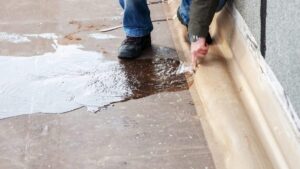
Soil Testing for Lawns: The Path to a Lush, Green Oasis
Soil underpins lawn health yet many overlook testing its composition. This obscures nutritional needs preventing lush growth. This article covers soil analysis importance. Tips aid do-it-yourself tests or using testing services. Interpreting results guides choosing amendments to nurture thick, green grass indistinguishable from golf courses. Coordinating with a chimney sweep spring cleaning allows soil work. Understanding soil composition transforms yards into picture-perfect oases.
Conduct a Soil Test and Interpret Results
We know that soil testing identifies pH, nutrient levels, and content. Kits offer fast, casual testing but sending samples to reputable labs provides a precise breakdown informing the customized plan. Collect composite samples representing the lawn’s varieties of soil. Mix equal amounts from 6 inches deep across the yard into a clean bucket. Follow instructions for packaging and shipping samples promptly to labs.
Results indicate pH and whether major/minor elements like nitrogen, phosphorus, and potassium exceed or fall below optimal ranges. This shows which nutrients require supplementation and by how much. pH measures acidity or alkalinity affecting nutrient availability. Most lawns grow vigorously when pH ranges from 6-7, so limestone or sulfur amendments may raise, or lower pH as needed.
Customize an Amendment Plan and Develop a Schedule
With lab results in hand, design a plan adjusting nutrients, pH, and organic matter step-by-step over seasons. When coordinating with a spring-cleaning company, schedule yard work too. Apply limestone or sulfur months before seeding or grass planting to allow chemical reactions influencing soil structure. Choose slow-release, balanced fertilizers matched to the amounts and elements requiring supplementation.
Grass demands consistent care yet over-amending risks burning or killing plants. Space soil remedy applications, like every 4-6 months during the growing season. Note results in a journal to repeat successes. After improving soil quality, established turf needs fewer intense amendments annually maintaining a lush appearance without deteriorating nearby waterways.
Impact of Soil Composition
Beyond supplying basic needs, optimal soil composition invites thick grass stands through characteristics like water retention, temperature regulation, and microbiota-nurturing roots. Loose, porous soil tilths allow constant hydration and air circulation fostering strong, healthy root systems appearing dense from above. Testing reveals current conditions and amendments transitioning soil towards these most desirable attributes.
Testing Frequency and Water Efficiency
Annual spring testing identifies shifts enabling prompt adjustments and preventing declines. Compared to past test levels noting pH changes or depletion trends requiring intervention. Reseeding, drainage changes, or core aeration alter compaction necessitating retesting. Testing confirms amendments deliver expected results and calibration adjustments prove worthwhile long term in maintaining the ideal soil environment continuously nourishing lawns.
Lawns growing within suitable soil’s moisture-holding ability require less supplemental watering reducing bills and runoff environmental impacts. Over-watering leaches nutrients from soil when conditions could naturally supply grass needs. Testing identifies drainage and composition influencing prudent irrigation practices cementing luscious landscapes resistant to drought and nutrient imbalance stresses from improper water schedules.
Conclusion
Soil sits as the foundation of breathable, radiant lawns. Testing alone illuminates soils’ composition suggesting amendments wisely positioning yards to thrive without continual guesswork. An understanding of soil complements schedules with maintenance experts like chimney professionals seamlessly delivering nourished lawns that impress neighbors year-round. Investment in occasional testing repays dividends through gorgeous yards established on strong nutrients and structure.


